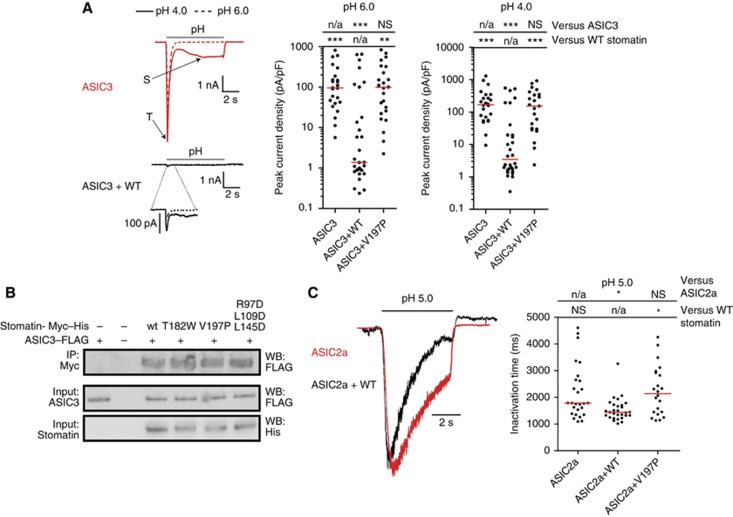Figure 3.
Stomatin dimerization is crucial for the inhibition of ASIC3 current amplitudes. (A) ASIC3-mediated currents in CHO cells (upper, red traces) have both transient (T) and sustained (S) phases; the S-phase is larger at pH 4.0 (solid line) than at pH 6.0 (dotted line). Co-transfection with stomatin results in inhibition of proton-gated currents (lower, black traces). In dot plots of peak current density, each dot represents one cell and the red lines show the median for each data set. The Kruskal–Wallis test followed by Dunn’s post test and statistical comparisons of peak current density compared with ASIC3 expressed alone and ASIC3 co-expressed with stomatin are shown. (B) Co-immunoprecipitations of FLAG-tagged ASIC3 from CHO cell lysates using Myc-tagged stomatin or the indicated mutants. (C) ASIC2a-mediated currents in CHO cells, normalized for current amplitude, showing that co-transfection of stomatin (black) decreases the inactivation time of pH 5.0 activated ASIC2a transient currents (red). In dot plots of inactivation time, each dot represents one cell and the red lines show the median for each data set. The Kruskal–Wallis test followed by Dunn’s post test and statistical comparisons of inactivation time compared with ASIC2a expressed alone and ASIC2a co-expressed with stomatin are shown. n/a, not applicable, NS, not significant, *P<0.05; **P<0.01 and ***P<0.001. Figure source data can be found with the Supplementary data.

